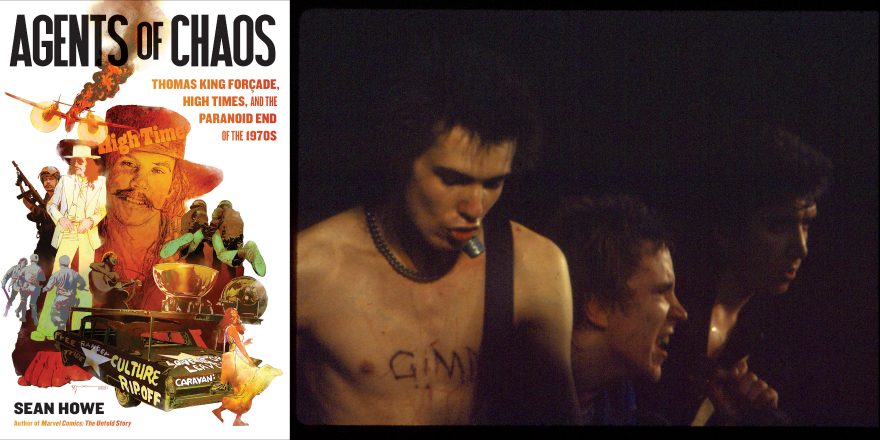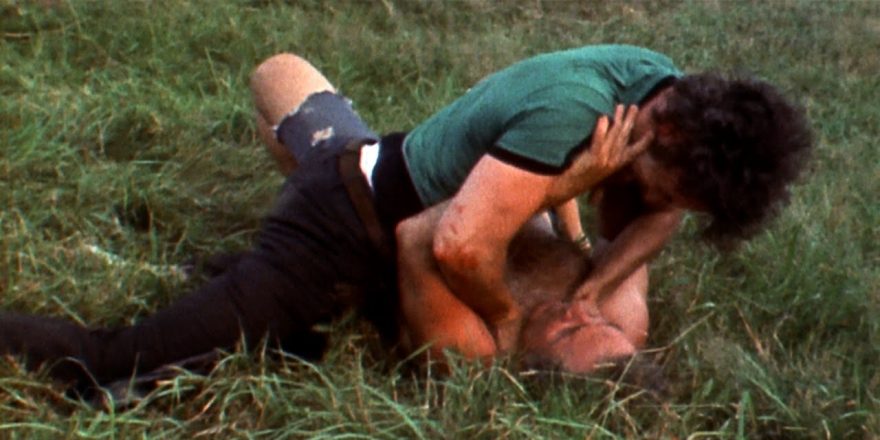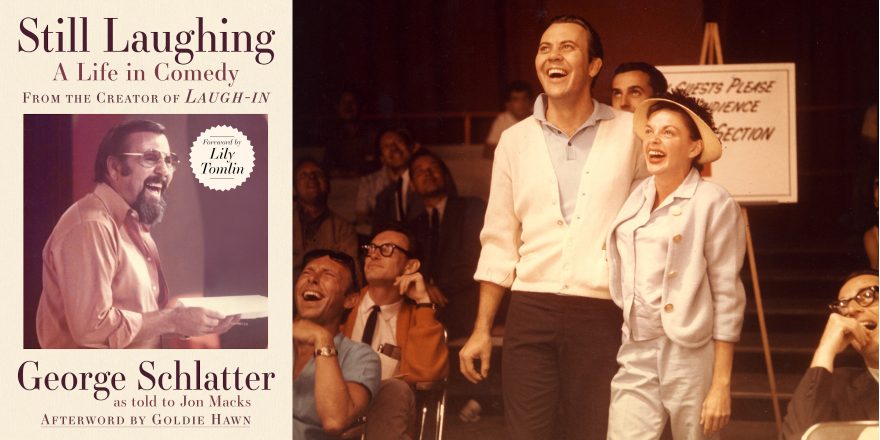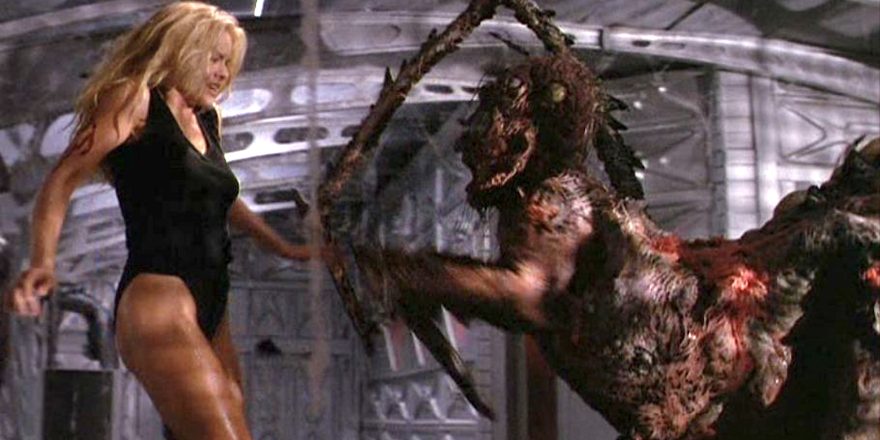The following is taken from Agents of Chaos: Thomas King Forçade, High Times, and the Paranoid End of the 1970s by Sean Howe, about life and times of High Times’ enigmatic founder Thomas King Forçade, an underground newspaper editor and marijuana kingpin who—between police raids, smuggling runs, and outrageous stunts—battled both the US government and fellow radicals. Agents of Chaos is out now through Hachette Books. The excerpt below is reprinted here by permission of the author; all rights are reserved.
In August 1975, a DC-4 cargo plane loaded with nearly two tons of Colombian marijuana and hashish made a virtuosic landing on a short, makeshift runway on the top of Treat Mountain, in Polk County, Georgia. “It looked like a bumblebee on a postage stamp,” one pilot said admiringly. Fourteen men were arrested, but the authorities couldn’t figure out how to remove the aircraft. The strange sight made for an instant tourist attraction, and a Georgia state legislator named Jim West had a vision of making a movie about the whole thing. At auction, he paid $20,000 for the plane — and purchased the mountain itself, for an additional $278,000. Then he began casting locally, hired a crew, and in the summer of 1977, Polk County Pot Plane hit theaters. It was a hokey, low-budget redneck caper. Forcade took notice. With the right repackaging, he thought, it might be blockbuster material — a Smokey and the Bear for dopeheads. He offered half a million dollars, with a $50,000 down payment, and informed Andy Kowl that he was taking half of that money from the magazine.
On the January 1978 morning that Forcade prepared to head to Georgia to deliver the cash payment for Polk County Pot Plane, he received a phone call from Lech Kowalski, a young filmmaker who was scrambling for backing to make a documentary about the Sex Pistols’ first US tour. He’d heard that the publisher of High Times might help him. As it turned out, the Sex Pistols were starting the tour two nights later, in Atlanta. He needed $10,000 to get started.
Forcade put Kowalski on hold for 10 minutes and returned to the line. “Pack your bags and bring all your equipment. Come down here around three o’clock, and we’ll go down to Atlanta.”
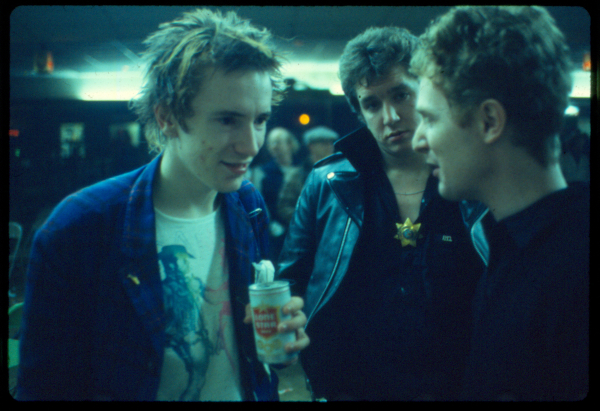
At the office, Kowalski was in for a long wait. People were passing out joints, so he accepted. A spacey paranoia began to overtake him, exacerbated when, at long last, Forcade invited him in and looked him up and down. “Give me a list of five people that you know in the business,” Forcade said. “Wait out there, and we’ll see what happens.”
An hour later, when an impatient Kowalski returned, Forcade told him he didn’t want to back his film after all. Kowalski was overwhelmed with panic. “This is really fucked up, to do this,” he spat out. “I waited all day, and it’s too late to call my other connections.”
“Why don’t you get out of here,” Forcade said, and disappeared. But the next time he came out, Kowalski, still parked in the reception area, convinced Forcade to loan him enough money for a plane ticket — the banks were now closed — so he could make it to Atlanta when the Sex Pistols arrived.
Forcade instructed Maureen McFadden to reserve a helicopter. Then he disappeared back into his office. As the workplace began emptying out for the day, a well-dressed middle-aged man entered the reception area and quietly stepped into Forcade’s office, where the lights were off. Another hour later, they emerged together. “Come on, let’s go,” Forcade muttered to Kowalski, and they got in the elevator. Forcade struggled with the key and violently kicked the doors. The three men went downstairs in silence and stepped into a black Cadillac, Forcade behind the wheel, the middle-aged man next to him, and Kowalski in the back.
As they weaved in and out of traffic, running red lights and hurtling 75 miles an hour down the FDR Drive toward the helicopter terminal, the still-very-high Kowalski deduced that the unfazed man in front, quietly urging Forcade to relax, was his psychiatrist. After the men ran into the waiting helicopter, Forcade produced an envelope packed with hundred-dollar bills and handed it to Kowalski without explanation. As the chopper was landing at the airport, and Kowalski prepared to jump out, Forcade warned him about avoiding the rotors. “He grabbed me affectionately and told me not to walk towards the back,” Kowalski remembered. “I felt he was mainly sending me a message: Things are going to get wild. Be on your toes, because if not, it can get dangerous.” Forcade flew first-class; Kowalski sat in coach. Upon arrival in Atlanta, Forcade instructed the filmmaker to rent a room in the Peachtree Plaza Hotel — “the highest room you can get. I’ll be in touch.”
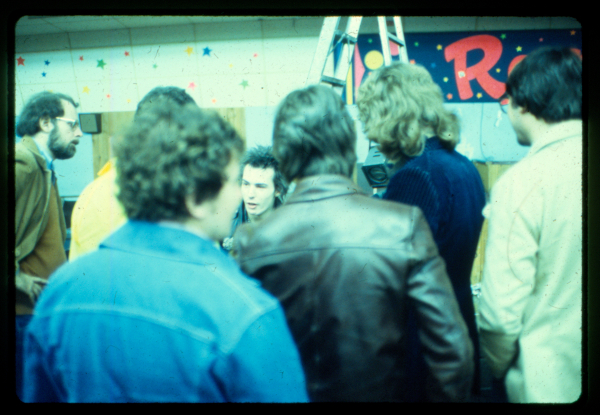
The next morning, Forcade called Kowalski to come upstairs — the publisher had already rented a suite of five rooms on the top floor, where plentiful amounts of dope were out. “Tom was very paranoid. He’s going, ‘Who’s this, what’s this, what’s going on here?’ He doesn’t trust any of the people who are coming in with the food and drinks we’re ordering.”
Initial overtures to Warner Brothers were a failure. “Forcade wanted to do a pirate documentary, a rebel documentary,” said Ted Cohen, who was the director of artist relations for Warner Brothers at the time. “Forcade thought the Sex Pistols were the first sign of the Armageddon and the complete disillusionment with the American government, and this was going to be the beginning of chaos. And it wasn’t a mercenary kind of thing — he really thought he was filming a documentary on the collapse of Western civilization.” This did not, unsurprisingly, align with Warner Brothers’ own plans.
But Forcade was feeling inspired. McFadden had contacts at Warner Brothers who got her the Sex Pistols’ itinerary. He called the Squire Inn and got their road manager, Noel Monk, on the phone, and informed him of his intentions to make a movie about the tour.
“You have to speak to Warner Brothers about that.”
“No, Mr. Monk, I’ve tried that once. I didn’t like it. I don’t think you understand. We’re going to make it worth your while.”
Monk made up an excuse to put him off, but Forcade kept calling back, increasingly agitated. He decided that the best way to procure the cooperation of the group was to deliver a rented 1934 Duesenberg and chauffeur to them. Then he called up Johnny Rotten. “Look out the window and you’ll see a car,” he said, and then hung up the phone. He told the chauffeur to circle around the hotel and keep checking in with him for further instructions (“Drive in,” “OK, now drive away,” et cetera).
Meanwhile, he’d had McFadden ship down stacks and stacks of copies of the High Times issue with Rotten on the cover and sent those via the chauffeur, who he then grilled for details by telephone: “What was the reaction?” “What color is the room?” The plan did not endear him to Rotten, who later wrote that he suspected High Times was a front for the Central Intelligence Agency.
The following night, Kowalski and his small, locally assembled crew managed to shoot some footage from the front of the Great Southeast Music Hall, before the Sex Pistols’ roadies physically picked them up and deposited them in the back. When Kowalski’s crew moved back up front, they were accosted again — but this time, Forcade’s chauffeur pulled out a gun. Then he put Kowalski up on his shoulders. Ten rolls of film were shot that night; the chauffeur immediately couriered them back to New York. The next show, to which they took a private plane, was in Memphis. Forcade flew down John Holmstrom and Roberta Bayley of Punk, hoping that they might be able to infiltrate the Sex Pistols’ inner circle. He also summoned two Puerto Rican martial artists from New York, to act as bodyguards. Forcade had a thousand High Times T-shirts printed to hand out to Sex Pistols fans, and color xeroxes of the Johnny Rotten High Times cover.
The evening of the concert, Sid Vicious was nowhere to be found. According to Noel Monk, Forcade called the road manager from a Holiday Inn and said, “I believe you’re missing someone, aren’t you … . If you come to my room by yourself, we can talk — about my documentary, that is, and then perhaps the two of us will have an opportunity to talk about where Sidney is.” Monk showed up with reinforcements, and Forcade professed not to know where the bassist was — but if they’d talk about the documentary, he’d find out. At that point, Monk looked out the window and glimpsed Vicious by the swimming pool swinging his studded leather belt at armed hotel security. In other tellings of the event — by Lech Kowalski, and by Michael Duck, who was traveling with Forcade — Sid Vicious showed up asking Forcade to score heroin. Forcade wondered how he might place him into rehab and even considered smuggling him to Jamaica, where Forcade had contacts. “The idea was not to kidnap Sid in order to hold him for ransom,” Kowalski insisted. “The idea was to kidnap Sid for his own health. But it was just an idea.” Duck says that the road crew handlers arrived at Forcade’s suite with FBI agents in tow. Regardless, Vicious was subdued and delivered to the Taliesyn Ballroom for the performance.
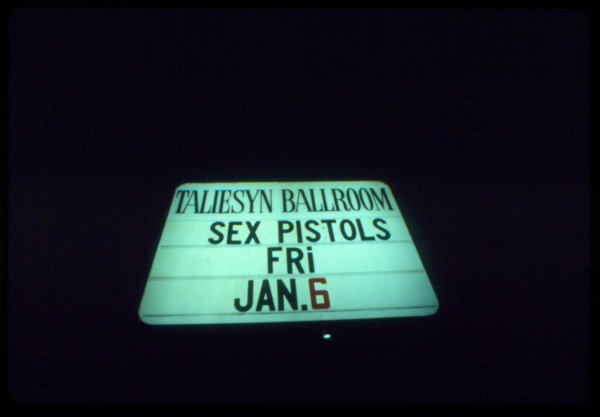
After the show, Kowalski was sitting in the limousine with Forcade when their still photographer came up and broke the number one rule: he photographed the publisher. Forcade flipped out. “I want this guy off the shoot!” he yelled. “If I ever see him again, I’ll kill him.” Kowalski, convinced that Forcade was a lethal danger, now flew in his own bodyguard — a production manager who was also a leather-wearing, motorcycle-riding knife collector.
The next morning, Forcade picked Holmstrom up in the limo and explained his plans: while Kowalski made the movie, Holmstrom would write everything he could about the tour.
“He wanted to be their manager, basically,” said Holmstrom. “He felt they were on the same political wavelength; he really liked what they were doing.”
Warner Brothers, Forcade confided, was holding Sid Vicious against his will, so they were going to have to get the band their bicycle chain belts to use for their own protection. And Holmstrom was not to say a word to anyone that he was working with Forcade.
“Not only did Warner Brothers not trust Forcade, but the band was also trying to figure out what he wanted,” said McFadden. “It was like espionage. Tom called me and said, ‘I want you to go my apartment, and get a brick of pot, and someone else is going to bring it down here. This is how we’re going to get in the door with the band.’”
Forcade’s ability to locate the band’s hotel rooms at every stop — thanks to the intercepted itinerary — only stoked the paranoia of the band and label as the tour continued to zigzag through the South, from San Antonio to Dallas to Baton Rouge. The route had been plotted for maximum confrontation value — the scary punks invading rural America — but now Forcade added another front to the war. And his entourage kept growing. A cameraman was hired away from a San Antonio television station, in hopes of obtaining press access. By then, Forcade had more people on the tour than the record label did.
“Every venue we would go to, they would show up somehow,” said Ted Cohen of Warner Brothers, “and we would have them thrown out. And they’d be back 15 minutes later because Forcade would pay a guy from the venue: ‘Here’s $200, look the other way.’”
But Forcade’s camp had its own fissures. Kowalski remembered Forcade haranguing the crew as they rode around in a truck. “He was in the front of the truck with the driver, facing all of us sitting in the back with the equipment, yelling out orders. Really shouting. ‘You go here, you do this.’ If someone interrupted, he would turn his back until the guy finished speaking, then turn around and talk about something totally different.”
In Dallas, Forcade urged Kowalski to rent a helicopter and hover over the Sex Pistols’ bus during a snowstorm in Dallas. “Give me the fucking camera and I’ll do it myself,” Forcade said, and Kowalski gave him a Bolex and rolls of film. But then he couldn’t convince the helicopter pilot to fly through the blizzard.
Money was running out. The crew, lacking the necessary funds for things like film stock, were making purchases with Forcade’s credit card numbers and selling the goods for cash in Tulsa. Forcade phoned High Times, demanding that seven blank checks immediately be delivered via airplane.
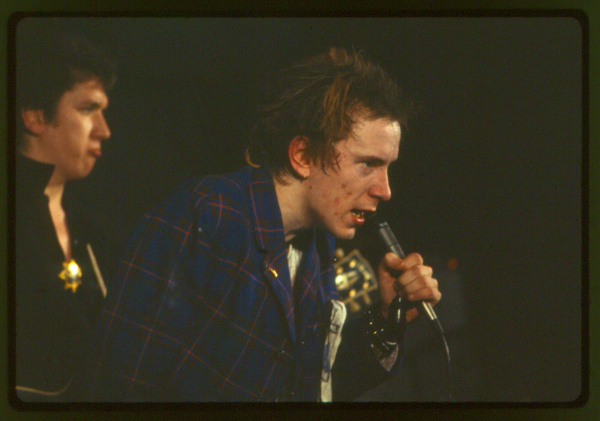
Kowl refused. “Tom, we got those plane tickets just like you asked, and we took care of the equipment rental, but I can’t send you blank checks. I have to pay the printer, I have payroll to make.”
“But it’s my company!”
“I understand that, Tom.”
“Well, you can quit.”
“I’m not going to quit, and I’m not going to send you blank checks.” Furious, Forcade reached Paul Tornetta, another signer on the account, who was home sick with the flu. “I want you to fire Kowl!” he screamed. “And I want you to take seven blank checks and send them to Tulsa —”
“Listen, Tom, I don’t know what you’re saying. I can’t talk to you.” Tornetta hung up the phone.
Despite all the challenges, the footage piled up. “He knew how to create a fantasy world for us as we worked,” said Kowalski. “He created an outlaw atmosphere. Tom created a psychological state in which all of the crew — including myself — felt invincible. We felt like the world was revolving around us; he did it in many little ways such as getting us chauffeurs and bodyguards.”
The Sex Pistols, for their part, were barely communicating with one another, and tensions between Johnny Rotten and the band’s manager, Malcolm McLaren, were rising. After the last performance, in San Francisco, the band was finished.
Featured image shows Sid Vicious in D.O.A.; all still from D.O.A. courtesy MVD.



